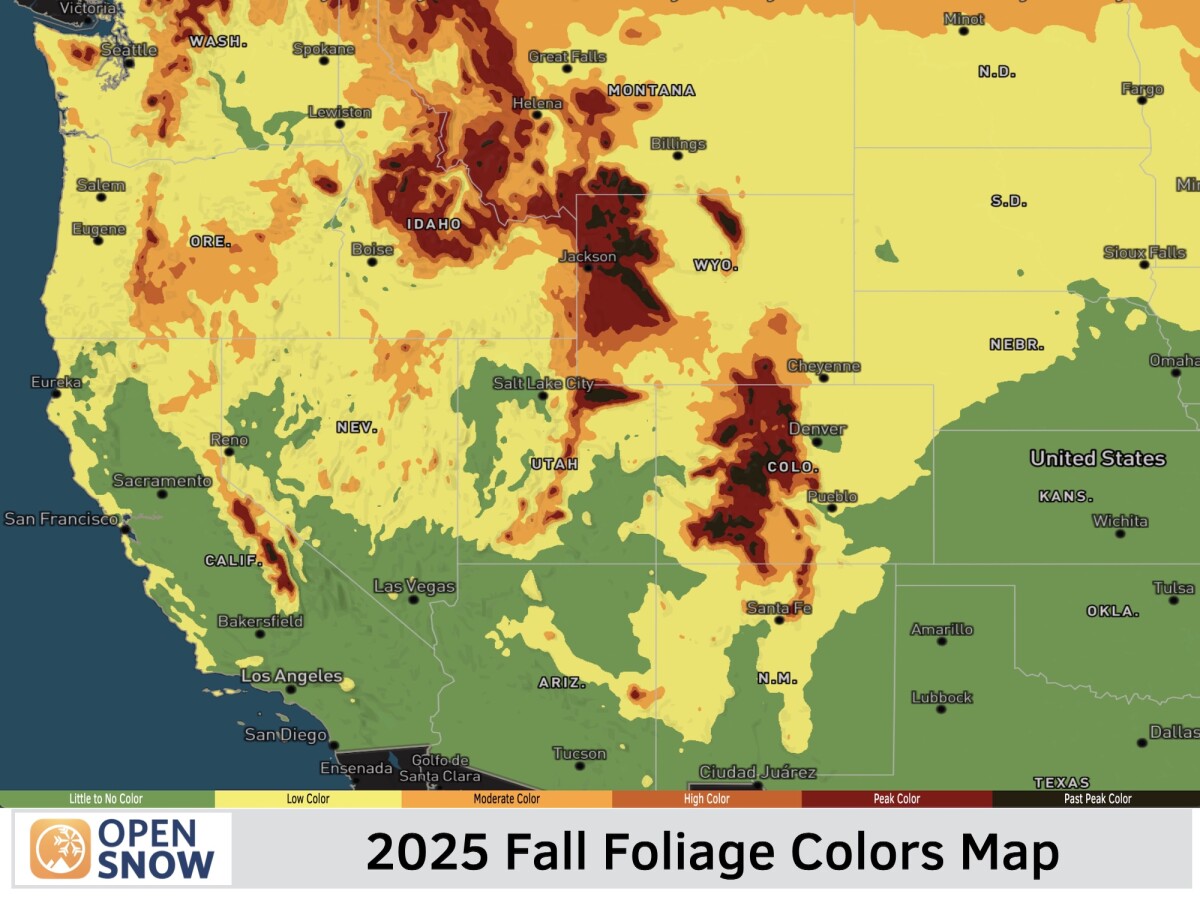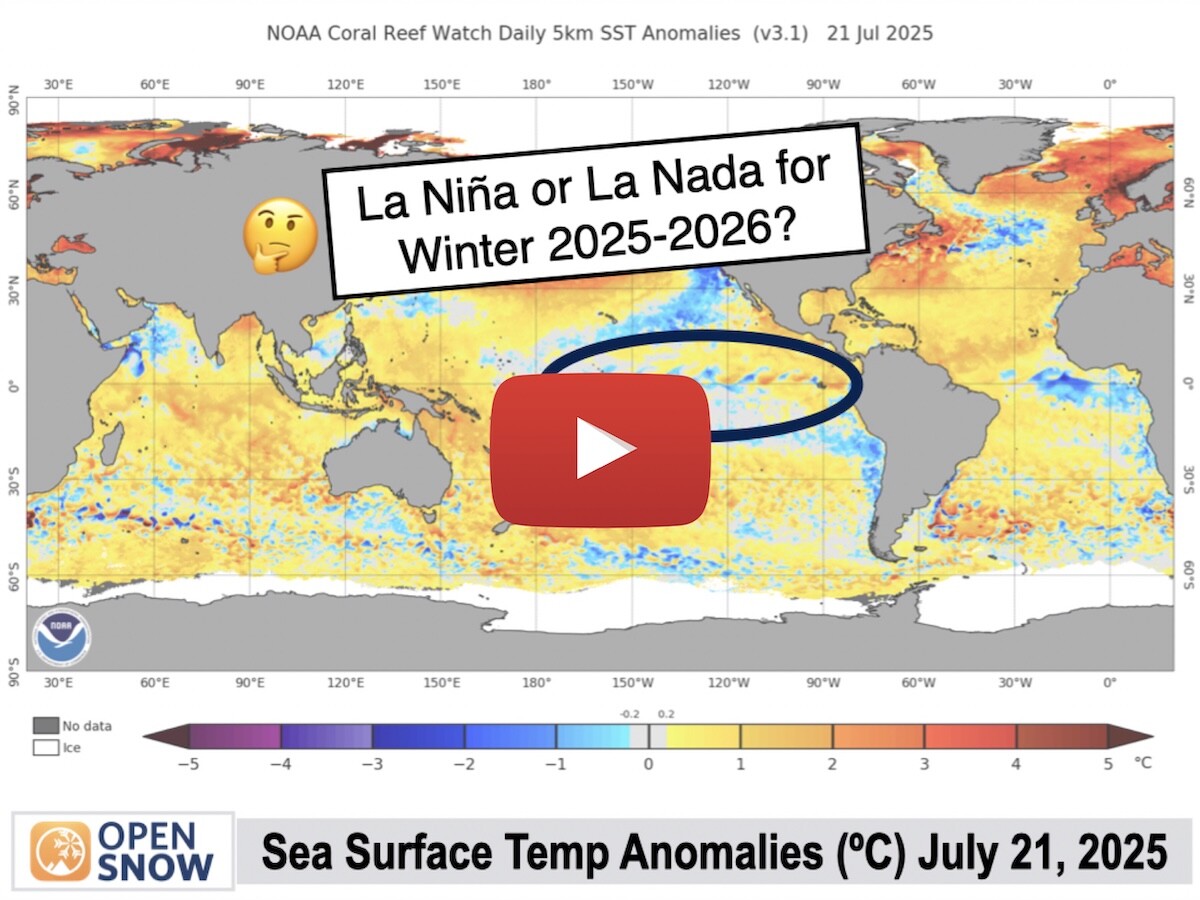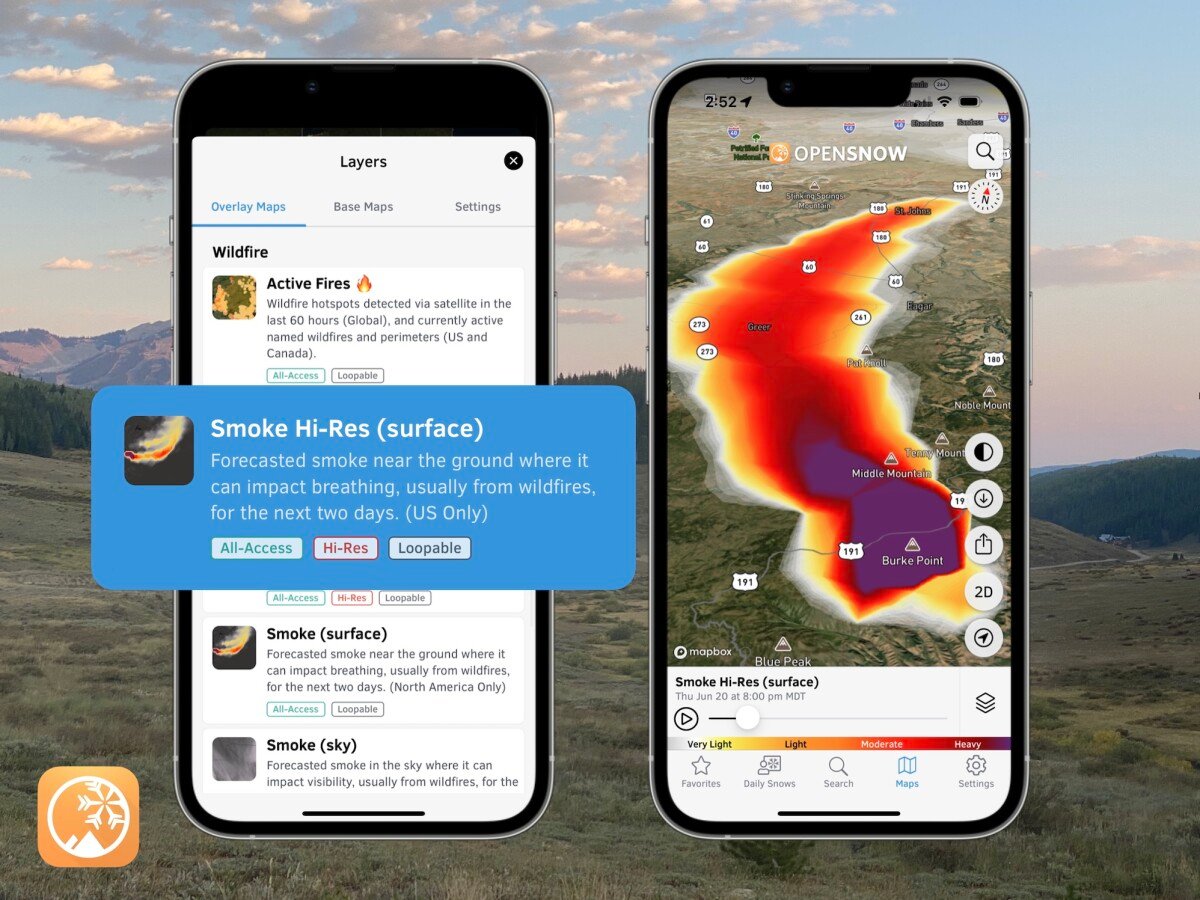Western US Daily Snow

By Alan Smith, Meteorologist Posted 21 days ago July 11, 2025
Weekend T-Storms Favoring New Mexico, Next Week Trending More Active
Summary
A cold front will slide southward into New Mexico over the weekend, where t-storms with locally heavy rain will be favored, while Colorado will also see isolated to scattered afternoon storms. Next week, a frontal system will move across the Northern & Eastern Rockies with heavy rain & chilly temps for Montana, while the Southwest will also see an uptick in t-storms as monsoon moisture increases.
Short Term Forecast
Helpful Links:
Wildfire and Smoke Update:
Wildfires have increased in coverage this week, including several new fires across Eastern Utah and Western Colorado that were triggered by lightning.
Smoke from these fires will lead to locally poor air quality at times, especially over the Southern Rockies, while a handful of larger fires are also burning across Northern California and Idaho.
Smoke Forecast for Saturday Afternoon:

5-Day Temperature Outlook:
Temperatures will generally be warmer than normal west of the Continental Divide and cooler than normal east of the Continental Divide. A cold front moving through early to mid next week will result in a substantial cool-down across the Northern Rockies, while the highest temperature anomalies will be over the Pacific Northwest.

Saturday (July 12):
A backdoor cold front will slide southward from Colorado into New Mexico with the frontal boundary stalling along the eastern slopes of the Divide.
Areas near and east of the Divide will be favored for scattered thunderstorms across New Mexico and Southern/Central Colorado, with stronger storms producing locally heavy rainfall rates. Localized flash flooding is also possible across this region, especially in New Mexico.

Western and Northern Colorado, as well as Southwest New Mexico and Southeast Arizona, will see more isolated thunderstorm coverage with storms generally producing light rain and gusty winds.

Sunday (July 13):
A low-grade monsoonal circulation will set up across Colorado, New Mexico, and Arizona, mainly east of a high pressure area that will be centered over Northwest Arizona.
Scattered thunderstorms will develop across the green shaded area, with stronger storms capable of moderate to heavy rainfall. Localized flash flooding will also remain a threat across New Mexico.

Elsewhere, pockets of isolated thunderstorms are expected across Northern Arizona, Northern California, Southern Oregon, and the Northern Rockies, with storms in these regions producing light rain and gusty winds.

Monday (July 14):
A trough will deepen southward from Canada into the Northwest U.S., with Pacific moisture increasing across Northern Idaho and Northern Montana. Widespread rain showers will develop across these areas, including Glacier National Park, with significant rainfall amounts possible.
Rain will be possible at all hours of the day and night, while isolated lightning is also possible, mainly during the PM hours.

To the south, monsoonal moisture will continue to favor Colorado and New Mexico (yellow shaded area) with scattered thunderstorms capable of producing locally heavy rain.
In between the Northern Rockies trough and the Southern Rockies monsoon, isolated thunderstorms are expected across orange-shaded areas with storms producing light rain and gusty winds.

Tuesday (July 15):
The Northern Rockies trough will continue to deepen southward and a cold front will also move through Idaho and Montana from north to south.
Behind the front, widespread rain and chilly temperatures are expected across much of Montana, and also the Northern Idaho Panhandle and far Northeast Washington. Significant rainfall is expected across this region.
Thunderstorm activity will be limited across Central and Northern Montana given the cooler airmass, while thunderstorms are more likely near the Montana/Wyoming border.
Further south, an uptick in monsoonal moisture is expected across Arizona, leading to more thunderstorms with locally heavy rain possible. Isolated to scattered thunderstorms can also be expected across New Mexico, Utah, Colorado, and Wyoming.

Wednesday (July 16):
The cold front will continue to progress southward with showers and thunderstorms favoring areas east of the Continental Divide in Southern Montana, Wyoming, and Northern Colorado.
To the south, ahead of the cold front, a monsoonal flow will result in scattered thunderstorms across the Four Corners region with locally heavy rain possible.

Extended Forecast
July 17-25:
The monsoon is expected to strengthen initially in the July 17-21 window with below normal temperatures favored across the Southwest due to the uptick in cloud cover, while the Interior Northwest will remain favored for above-normal warmth.

NOAA's 6-10 day outlook for July 17-21 has much of the West favored for above-normal rainfall (excluding the Sierra, Great Basin, and Southern Cascades) as monsoonal moisture increases, while additional disturbances may track across the Northwest and Northern Rockies.

From about July 21 to 25, the pattern looks to favor seasonal monsoon thunderstorms across the Four Corners region, with near-normal precipitation favored, while a drying trend is projected across Utah and into the Interior Northwest

Late July to Early August:
Every Friday, NOAA issues a 3-4 week temperature and precipitation outlook. While confidence is inherently lower at this time range, these outlooks often give a good general idea of what to expect.
The monsoon is projected to intensify and become more westerly focused during late July and early August, with wetter signals showing up across Arizona, Utah, Western Colorado, and Wyoming.
This is also consistent with our summer outlook that we published a couple of months ago, which hinted at the possibility of a westerly-focused monsoon being favored during the peak season.

Temperatures are projected to be warmer than normal across the Interior Northwest and near-normal across the Southwest and the Central Rockies. Also, keep in mind that late July to early August is when average temperatures are highest in most areas, from a climatological perspective.

Thanks so much for reading and have a great weekend! Next update on Monday (July 14).
Alan Smith
About Our Forecaster




